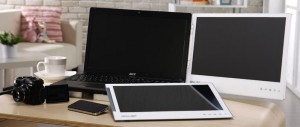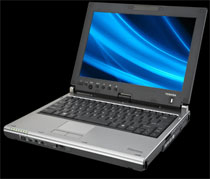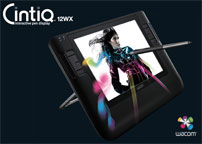May 26, 2013, 12:31 PM
Author Archives: Briac Pollier
 That’s a very different field than the previous post, that of the video game industry, however the kind of campaign is similar. And not for just any game, one of the best ever in my opinion, Deus Ex Human Revolution.
That’s a very different field than the previous post, that of the video game industry, however the kind of campaign is similar. And not for just any game, one of the best ever in my opinion, Deus Ex Human Revolution.
For that game the marketing team made a “mini” website, the Sarif industries website. Of course that company doesn’t actually exist, it is part of the game’s plot, a company specialized in cybernetic implants for which the hero is chief of security, and is going to start asking himself questions, first about his employer, then about the whole system, the whole world, figuring out the democracy he believes he is living in is not as democratic as one might think, especially because the medias are under a very strong control… Not only that website is the homepage of a fictional company, but which seems to be a real one, showing the different devices they sell and their advantages, news extracts, etc. just like a real corporate website would, but it is also placed into the game’s context, where an anti implants activists group, which apparently seem to be against cybernetic implants for ethical reasons, is at war against them. That website therefore looks as if it had been hacked by that activists group, and navigation is malfunctioning, but that’s done on purpose, (more…)
Posted in Beautiful websites, Interesting websites
May 22, 2013, 7:17 PM
 You certainly don’t know about that TV series, as it’s a French one (as it was very successful in France it got exported so actually you might), but even though I’m not at all in the target audience (feminine, and older than me), I love Fais pas ci, fais pas ça. It’s, in my opinion, a French TV series at its best: one which doesn’t try to take itself seriously, which enables finding original concepts, in that case the criticism of a certain part of society though two fictional families, who live in the same street, and both of which are part of the upper middle class, but very different kinds: one is bobo (that French term literally translates to Bohemian upper middle class, it means upper middle class people who try to act as if they were not, drinking sustainable coffee to show they care for people for example, but showing off with their i-phone) and the other one is a very traditional family, very religious, the husband working and the wife at home. They seem to be exact opposites, at least that’s how they see each other, yet sometimes they actually aren’t, the bobo family wants to look cool, and open minded, but more often than not the mother is actually putting a lot of stress into her children. And when they are actually doing things very differently than the other family, it is not a good thing as they are way too careless. The other family being very traditional they have all the defaults linked to that, and they hate the bobo family. But their children know each other and are friends of each other. That leads to a lot of funny situations. Anyway that article is not about the TV series but about its marketing campaign : The Denis Bouley method website (Sorry, it’s in French only). (more…)
You certainly don’t know about that TV series, as it’s a French one (as it was very successful in France it got exported so actually you might), but even though I’m not at all in the target audience (feminine, and older than me), I love Fais pas ci, fais pas ça. It’s, in my opinion, a French TV series at its best: one which doesn’t try to take itself seriously, which enables finding original concepts, in that case the criticism of a certain part of society though two fictional families, who live in the same street, and both of which are part of the upper middle class, but very different kinds: one is bobo (that French term literally translates to Bohemian upper middle class, it means upper middle class people who try to act as if they were not, drinking sustainable coffee to show they care for people for example, but showing off with their i-phone) and the other one is a very traditional family, very religious, the husband working and the wife at home. They seem to be exact opposites, at least that’s how they see each other, yet sometimes they actually aren’t, the bobo family wants to look cool, and open minded, but more often than not the mother is actually putting a lot of stress into her children. And when they are actually doing things very differently than the other family, it is not a good thing as they are way too careless. The other family being very traditional they have all the defaults linked to that, and they hate the bobo family. But their children know each other and are friends of each other. That leads to a lot of funny situations. Anyway that article is not about the TV series but about its marketing campaign : The Denis Bouley method website (Sorry, it’s in French only). (more…)
Posted in Interesting websites
May 18, 2013, 5:07 PM
 It’s a real revolution for all graphic designers who like traveling and want to be able to work on the road, such as me. I love traveling, but the problem is that you are limited in both weight and volume when you do that, because there’s a maximum weight I can physically carry, and because of the weight limitations of airplane companies. You can’t carry with you an external screen. But that’s a necessity for any true graphic designer, because one quickly becomes cluttered with the huge amount of tools that come with graphic design software such as Photoshop, and that’s even more true with video software such as After Effects. Especially when you have invested in a light and small computer for convenience. Although small, it can be very powerful, more than enough for motion graphics, customized in order to be the most efficient possible, with an SSD hard drive an 8 gigabytes of memory, but the 13 inch screen quickly becomes an issue.
It’s a real revolution for all graphic designers who like traveling and want to be able to work on the road, such as me. I love traveling, but the problem is that you are limited in both weight and volume when you do that, because there’s a maximum weight I can physically carry, and because of the weight limitations of airplane companies. You can’t carry with you an external screen. But that’s a necessity for any true graphic designer, because one quickly becomes cluttered with the huge amount of tools that come with graphic design software such as Photoshop, and that’s even more true with video software such as After Effects. Especially when you have invested in a light and small computer for convenience. Although small, it can be very powerful, more than enough for motion graphics, customized in order to be the most efficient possible, with an SSD hard drive an 8 gigabytes of memory, but the 13 inch screen quickly becomes an issue.
What about a tablet ? Basic tablets, Android or iOs powered, are not usable for graphic design by themselves, because of software and hardware limitations : not powerful enough, and touchscreens are not suitable for graphic design, you need either a stylus or a mouse. But what about using them as external screens for a laptop? Bad idea. There are software solutions for that, but they’re not suitable to graphic design as the tablet doesn’t work as a real screen, more like a second graphics card. That means it doesn’t use your graphics card’s graphic acceleration, a necessity for graphic design. Other than that the tablet is used as a server with these solutions, it’s a network system that enables connectivity with the computer. A USB2 network… That’s slow. Therefore you will have some lag on the display. Far from perfect.
But that’s the past. (more…)
Posted in Hardware
May 17, 2013, 4:39 PM
For once, I will exceptionally use this blog for self-advertisement. As you might have realised, it is a sobdaimain of the www.emotion-designer.com website, which I own, and which is my online portfolio / show-reel. Why emotion designer ? Because I’m a freelance motion designer, but the domain name was not available. However the « e » stands for new technologies, and also for creating emotions through animated images. What is a motion designer? (more…)
Posted in Others
, 4:39 PM
 As stated previously, I’m a graphic designer, but I don’t like Macs. And I’ve got good reasons for that: why pay an expensive price for a product you can have, much cheaper, and more powerful, in the PC world? Especially when you see some expensive Macbook pros are sold around 1,800 euros, without a dedicated graphics card, just the integrated Intel chipset coming with Intel Core i microprocessors… Especially when, the PC world, often wrongly accused of copying Macs (whereas actually the copy is two way, actually even three way as both Microsoft and Apple copy from the Linux world, making user friendly innovative ideas in a system which is unfortunately not for being too difficult to use for everyday users and for not having the most popular software, Steve Jobs himself said a lot of good about copying other people’s work, saying somebody who just copied something was a bandit, but somebody who copied something to make something better out of it was a genius, which makes you wonder why while he was still alive he launched so many legal procedures against companies such as HTC or Samsung) is in fact becoming the most creative one, thanks to Windows 8: Even though I don’t consider that system as being a progress at all for normal computers, with a mouse and no touchscreen, it has the merit of trying to encourage a complete different way of conceiving computers themselves, with the hope that altogether new way will be more comfortable to people than the original concept which now dates from a few decades already, it enables having a real, full-fledged computer, in the shape of a tablet, instead of encouraging the use of multiple gadgets as Apple does with its iPad, because the iPad can be more comfortable to use for some things, but you still need a real laptop as its functions are limited, a waste of money. (more…)
As stated previously, I’m a graphic designer, but I don’t like Macs. And I’ve got good reasons for that: why pay an expensive price for a product you can have, much cheaper, and more powerful, in the PC world? Especially when you see some expensive Macbook pros are sold around 1,800 euros, without a dedicated graphics card, just the integrated Intel chipset coming with Intel Core i microprocessors… Especially when, the PC world, often wrongly accused of copying Macs (whereas actually the copy is two way, actually even three way as both Microsoft and Apple copy from the Linux world, making user friendly innovative ideas in a system which is unfortunately not for being too difficult to use for everyday users and for not having the most popular software, Steve Jobs himself said a lot of good about copying other people’s work, saying somebody who just copied something was a bandit, but somebody who copied something to make something better out of it was a genius, which makes you wonder why while he was still alive he launched so many legal procedures against companies such as HTC or Samsung) is in fact becoming the most creative one, thanks to Windows 8: Even though I don’t consider that system as being a progress at all for normal computers, with a mouse and no touchscreen, it has the merit of trying to encourage a complete different way of conceiving computers themselves, with the hope that altogether new way will be more comfortable to people than the original concept which now dates from a few decades already, it enables having a real, full-fledged computer, in the shape of a tablet, instead of encouraging the use of multiple gadgets as Apple does with its iPad, because the iPad can be more comfortable to use for some things, but you still need a real laptop as its functions are limited, a waste of money. (more…)
May 16, 2013, 6:27 PM
OK so, a few years ago I created this blog, searching for editorial guidelines which wouldn’t be the classical ones that graphic designers like to use: a blog which is nothing else than their portfolio, or about some designs they like. My editorial guidelines were not to write about graphic design itself, but about the technologies that are in orbit around it, and thus without any advertisement for Apple, as it is a cliché that a graphic designer should use a Mac for his work. Not only it isn’t true but Adobe software is in fact better optimized for the hardware using the Windows 7 Operating System. That’s the reason why, in the traditional area of graphic design, still images, nearly everybody uses a Mac, even though that’s the one that needs the less processing power. But for motion design, where processing power is much more important, only half of the people do, even though I must admit the Prores video codec which comes with Final Cut Pro is a serious advantage. And then in the 3D area, most people use PCs. (more…)
Posted in Others
November 29, 2009, 7:52 AM
 It has been a very long time since I last posted on this blog, even though I answer comments. That’s because I am in Australia with much different things in mind. But when I stumble upon an efficient solidarity system, while booking some plane tickets through the internet I want to advertise about it. You never know, it could give ideas to some people… That’s something I’ve always been interested by : in an ultra-capitalistic society such as ours is it possible to create a viable economical system while helping out people in need. One of the Australian websites on which I booked my plane tickets, http://www.jetabroad.com.au, has a simple and efficient solution to that issue, you can if you want to add a small amount of money to your purchase, which is then used to help support the education of Cambodian children. Given that their prices are amongst the cheapest on the internet, because you can plan a trip with stopovers, which you cannot do at this time on Opodo and Expedia, the biggest companies, I didn’t hesitate even a second. If everybody decides to add that small amount of money, or even only half of the people who use this website to buy their tickets, they can end up raising up quite a big charity fund. And this system certainly has the advantage of giving them a positive advertisement…
It has been a very long time since I last posted on this blog, even though I answer comments. That’s because I am in Australia with much different things in mind. But when I stumble upon an efficient solidarity system, while booking some plane tickets through the internet I want to advertise about it. You never know, it could give ideas to some people… That’s something I’ve always been interested by : in an ultra-capitalistic society such as ours is it possible to create a viable economical system while helping out people in need. One of the Australian websites on which I booked my plane tickets, http://www.jetabroad.com.au, has a simple and efficient solution to that issue, you can if you want to add a small amount of money to your purchase, which is then used to help support the education of Cambodian children. Given that their prices are amongst the cheapest on the internet, because you can plan a trip with stopovers, which you cannot do at this time on Opodo and Expedia, the biggest companies, I didn’t hesitate even a second. If everybody decides to add that small amount of money, or even only half of the people who use this website to buy their tickets, they can end up raising up quite a big charity fund. And this system certainly has the advantage of giving them a positive advertisement…
Posted in Interesting websites
July 6, 2009, 7:18 PM
 Well, I haven’t updated this website for a huge amount of time, first because of my work and then more recently because I was busy backpacking in Australia.
Well, I haven’t updated this website for a huge amount of time, first because of my work and then more recently because I was busy backpacking in Australia.
A lot of people showing their interest on the outdated ticket I wrote about the advantages of Tablet PCs over graphic tablets, for drawing and graphic design, I decided to write an updated ticket covering 2009’s options. Unfortunately they are not very good, the choices have become more limited. Where you used to have different screen sizes you now only find 13.3 inches or less, with a standard resolution limited to 1,280×800. It is the same resolution as the Cintiq 12wx, Wacom’s solution for drawing directly on a screen, but that’s a very low resolution for complex graphic design software, which have a huge amount of drop-down menus and for which the number of available pixels is precious… Of course you can plug in a second screen, but the stylus only works on the laptop’s screen, therefore if you put your tool menus on the second screen you need to keep on switching between mouse / touch pad and stylus. And this is a very low amount of pixels when you know that the nowadays old and outdated Tablet PC, the Toshiba M200, had a 1,400×1,050 12 inch screen.
(more…)
Posted in Hardware
July 30, 2008, 1:34 PM
 It has been a very long time since I last wrote on this blog, being very busy with my work which had everything of a full time job, even though I was a freelancer. As now I have some time again I take that opportunity to do it again, to write about a website which, for once, doesn’t have anything to do with graphic design, but deserves being advertised. Sorry for all you English speakers, it’s a French website, as I’m French… But I leave this post in the English version of this blog hoping it will give some ideas to some people… If like me you are kind hearted, if you are the kind of person to give money to an NGO every month, in order to help people in need, you will be interested by this website. It has an original concept, quite excellent in its own way: you are used to buying over the internet, and as it happens there is something you would like to buy: why not an induction stove as a replacement to this horrible electric stove which doesn’t heat up well and gets dirty very quickly? Or a graphic tablet to replace the one you already have and which is too small? Then you think you are a victim of the consumers society, as you actually don’t need these objects.
It has been a very long time since I last wrote on this blog, being very busy with my work which had everything of a full time job, even though I was a freelancer. As now I have some time again I take that opportunity to do it again, to write about a website which, for once, doesn’t have anything to do with graphic design, but deserves being advertised. Sorry for all you English speakers, it’s a French website, as I’m French… But I leave this post in the English version of this blog hoping it will give some ideas to some people… If like me you are kind hearted, if you are the kind of person to give money to an NGO every month, in order to help people in need, you will be interested by this website. It has an original concept, quite excellent in its own way: you are used to buying over the internet, and as it happens there is something you would like to buy: why not an induction stove as a replacement to this horrible electric stove which doesn’t heat up well and gets dirty very quickly? Or a graphic tablet to replace the one you already have and which is too small? Then you think you are a victim of the consumers society, as you actually don’t need these objects.
But if evry time you bought something part of the money was given to NGO of your choice? Without even having to pay more, just because you chose so? You would still be a victim of the consumers society, but in a much less selfish way.
Well that’s possible, with a website called Soliland. A revolutionary system, even though it doesn’t look like it: it compares prices between many partner websites. When you have found the product you want, and you click to buy it on the merchant website, that website knows where you come from. You pay the product the same price everybody does, but because you have used that price comparator, a percentage is automatically given to the NGO you have selected when creating an account on Soliland, or to all the NGOs which have an agreement with them if you haven’t configured an account.
Of course it’s not perfect, the NGOs list is limited, the ones you like might not be included. But you will find in the list some famous NGOs. The search engine doesn’t seem that great though, if I search “graphic tablet” I only find 9 products, but if I search Wacom I get 55… But what is a bit of time wasted when you can help people in need unlike with a more efficient system. Sometimes it will be even faster to search for a product on a website you know and are used to, get the ref from there and then search with Soliland in order to come back to that website, only in order to give a bit of money to NGOs by doing such a thing.
Posted in Interesting websites
January 24, 2008, 1:49 AM
 If you don’t know Wacom’s Cintiq range yet, that’s simple : it’s their top of the range graphic tablets, which have a screen, thus enabling you to draw directly on a screen as you would on paper. Because drawing on some empty surface, looking at the lines you’re creating on a computer screen which is not below your stylus is in no way natural, it isn’t “logical”, and unlike what I have read on the internet it has nothing to do with being used or not to computers. If you really like drawing you can never get used to this paradox, you learn to deal with it because you don’t have a better option. Being able to draw directly on the screen, on the other hand, is logical, natural, a huge comfort and a liberated gesture. And Wacom means a lot of advantages to make you feel closer to the real thing: pressure levels, precision, and quality… But the Cintiq range is not new. In which way is this product interesting? Because of its price! As a top of the range product, Cintiq tablets have always been overly expensive, and are therefore a luxury. It’s still the case, but it has become affordable. This smaller model than its counterparts (the screen is still 26 per 16 cm, all of it stylus enabled, of course, with a 1,280X800 resolution) is “only” worth 1,200 €.
If you don’t know Wacom’s Cintiq range yet, that’s simple : it’s their top of the range graphic tablets, which have a screen, thus enabling you to draw directly on a screen as you would on paper. Because drawing on some empty surface, looking at the lines you’re creating on a computer screen which is not below your stylus is in no way natural, it isn’t “logical”, and unlike what I have read on the internet it has nothing to do with being used or not to computers. If you really like drawing you can never get used to this paradox, you learn to deal with it because you don’t have a better option. Being able to draw directly on the screen, on the other hand, is logical, natural, a huge comfort and a liberated gesture. And Wacom means a lot of advantages to make you feel closer to the real thing: pressure levels, precision, and quality… But the Cintiq range is not new. In which way is this product interesting? Because of its price! As a top of the range product, Cintiq tablets have always been overly expensive, and are therefore a luxury. It’s still the case, but it has become affordable. This smaller model than its counterparts (the screen is still 26 per 16 cm, all of it stylus enabled, of course, with a 1,280X800 resolution) is “only” worth 1,200 €.
Is the alternate solution I’ve spoken about before here, a penabled Tablet PC (which means using Wacom technology) still worth it? More than ever: when new the cost is about the same, and it’s the same technology, but including an operating system, which seems to mean Wacom has a bigger price margin on products they sell themselve than on those they sell to third parties as components : a screen by itself should be way cheaper than a whole computer.
Pros of a tablet PC : you can use it while travelling (laptop + cintiq, that would be very expensive, and bulky), and Tablet PCs often have a much better resolution (smaller pixels and bigger amount).
The Cintiq 12wx still has advantages : it is not always easy to find out if a Tablet PC has Penabled technology, and not just a simple touch screen, or their own technology, they are not as powerful as desktop computers and the hardware cannot be upgraded unless buying a new one altogether, and there is no Mac Tablet PC whereas Cintiq works on both operating systems.
Cintiq 12wx showcase
Posted in Hardware













